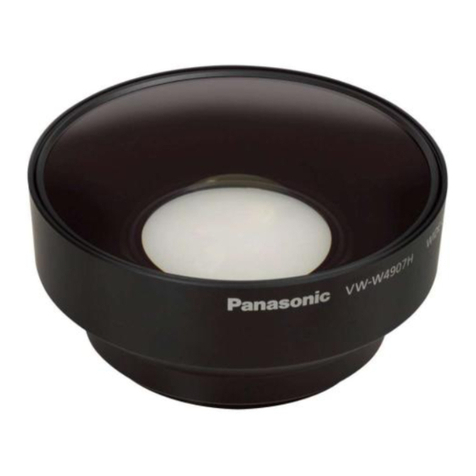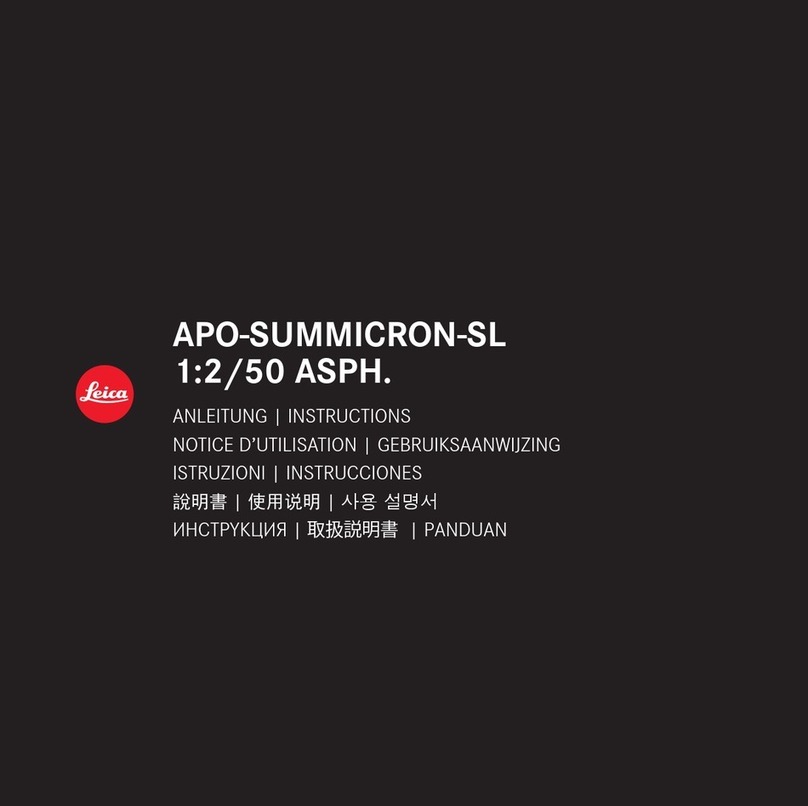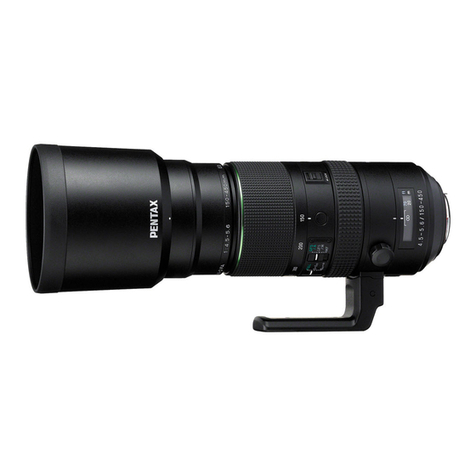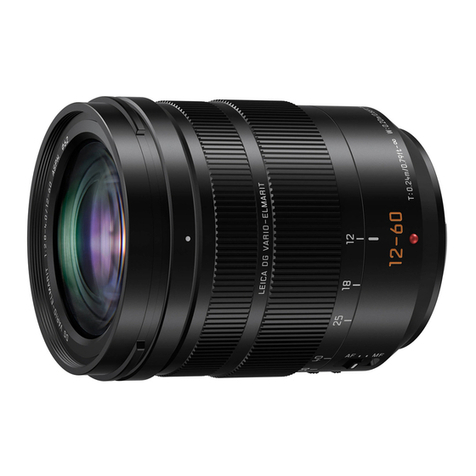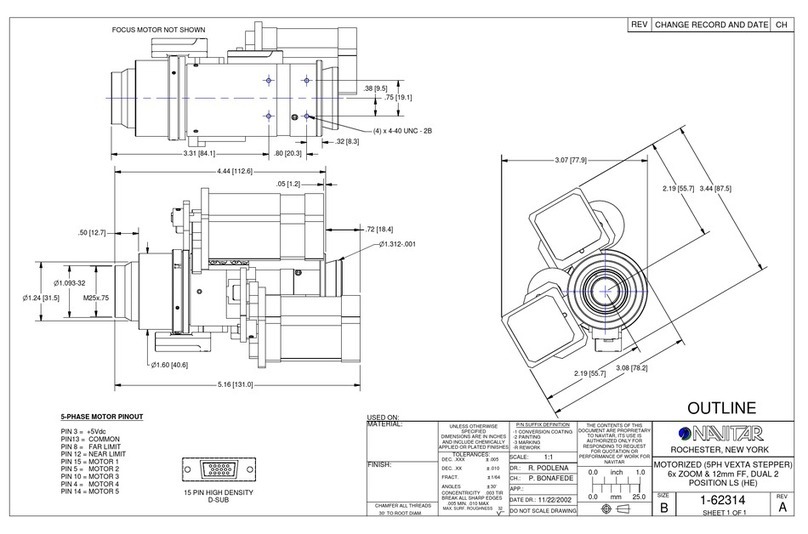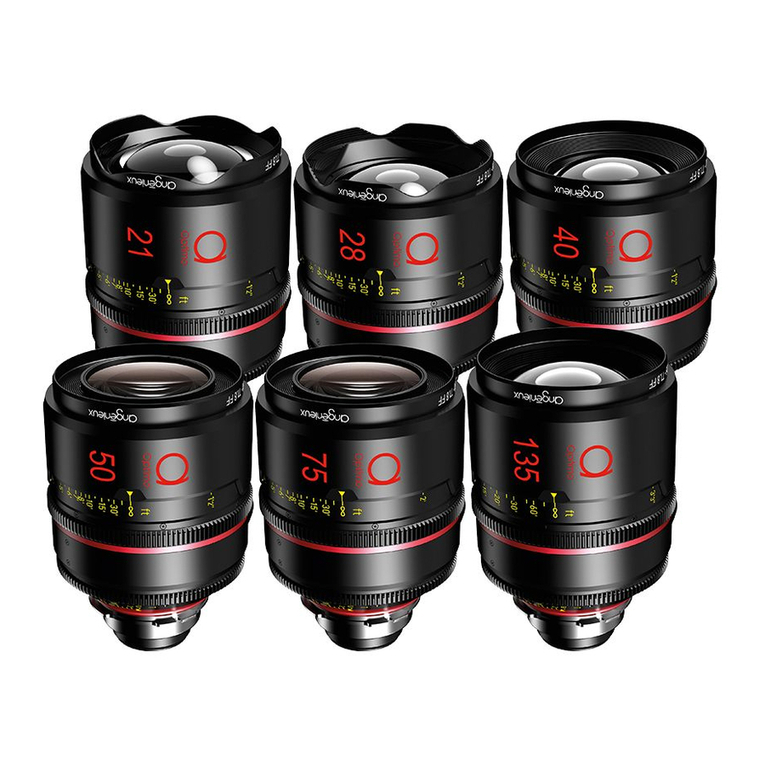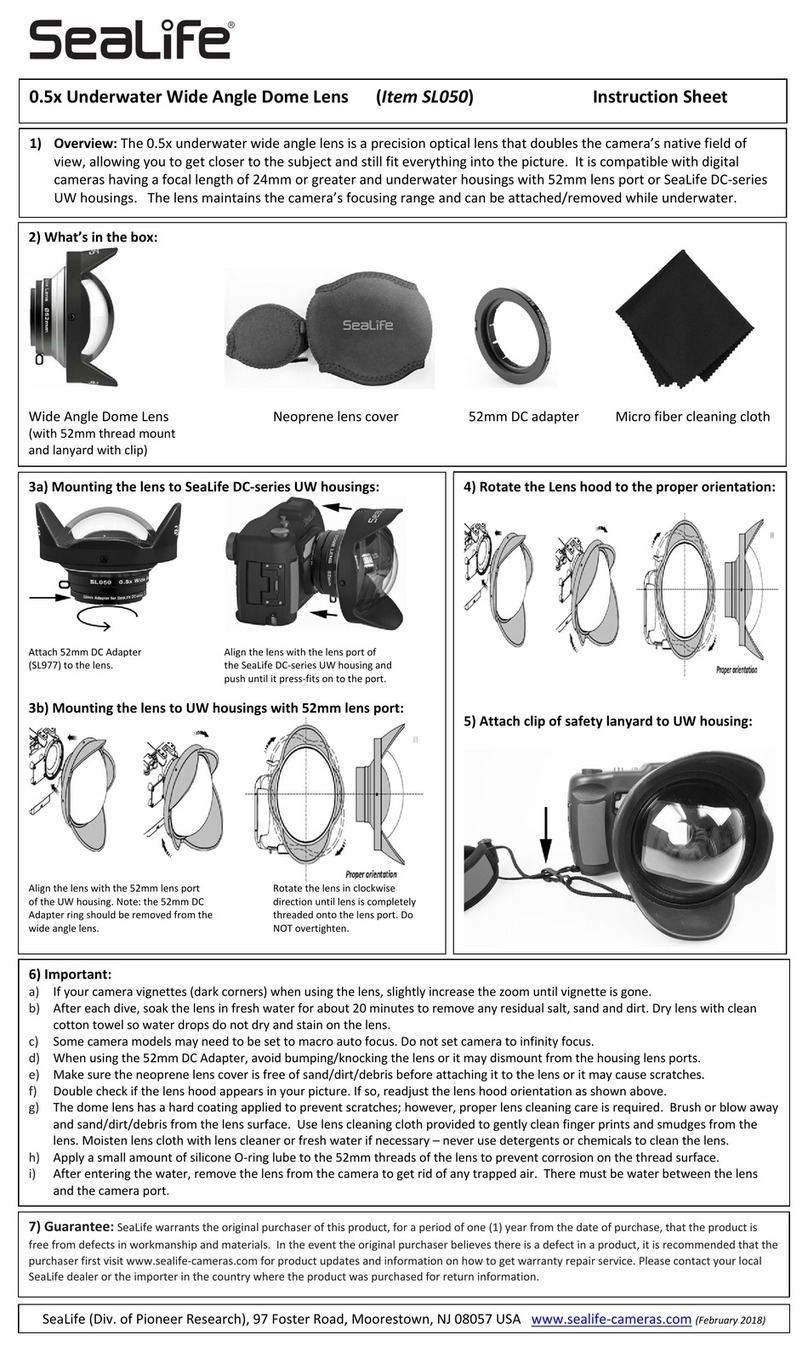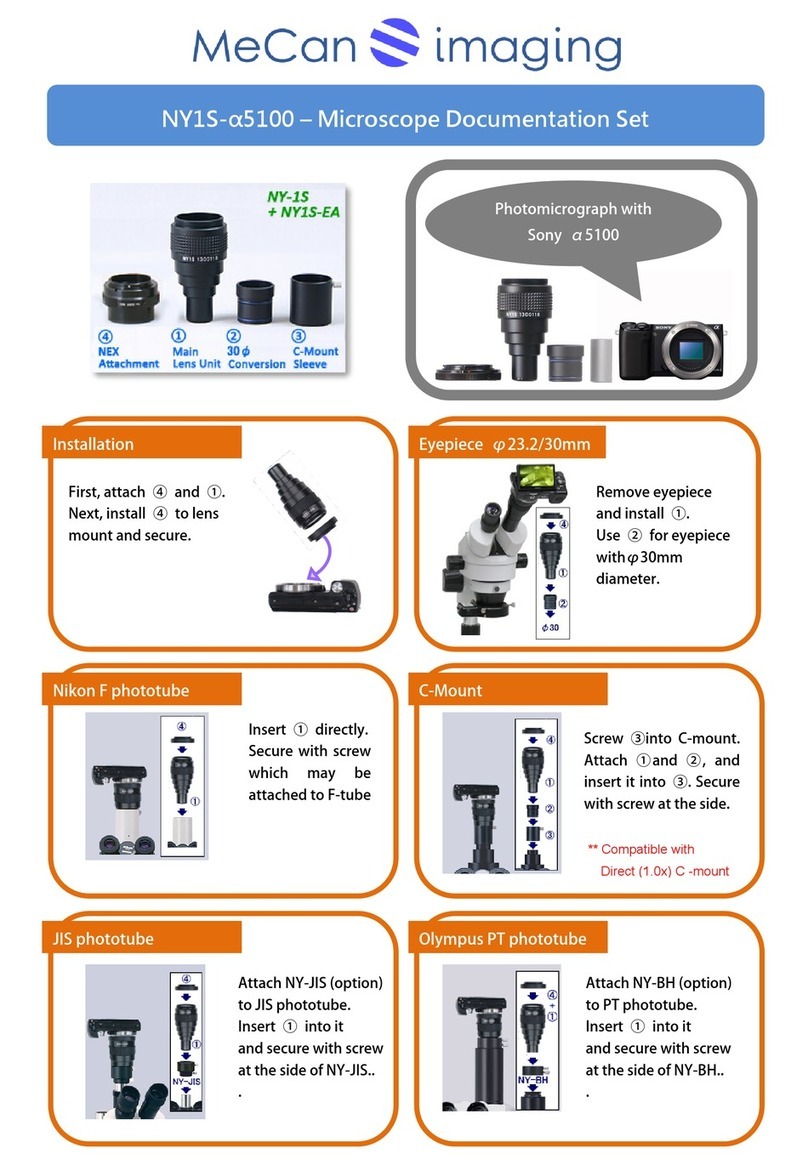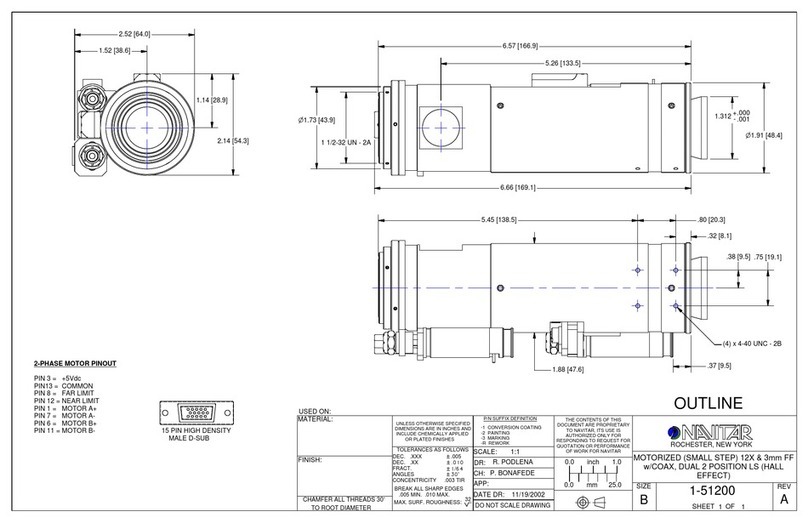
Copyright © RICOH IMAGING COMPANY, LTD. 2015
DA1685EN FOM 01.05.2015 Printed in Europe
HD PENTAX-DA 16-85mmF3.5-5.6ED DC WR
OPERATING MANUAL
Thank you for purchasing the HD PENTAX-DA 16-85mm F3.5-5.6ED DC WR lens.
This lens is an interchangeable lens specifically designed for digital cameras. Its optical
system is optimized for the characteristics of digital images.
Please read this operating manual carefully before using the lens to ensure that it is used
properly. In addition, also refer to your camera operating manual.
To use this lens, please keep the firmware of the camera up to date.
• Illustrations shown herein may differ from the actual appearance.
Specifications and external dimensions are subject to change without
notice.
Refer to your camera operating manual for details about mounting
and removing the lens.
Although we have carefully designed this lens for safe operation, please pay special
attention to items marked with the following symbols when using the lens.
This symbol indicates precautions that if not followed, could result in
serious injury to the user.
This symbol indicates precautions that if not followed, could result in
minor or medium injury to the user or damage to the equipment.
FOR SAFE USE OF YOUR LENS
Never look at the sun through the lens mounted on the camera for a long time. Serious
damage to your eyes or total loss of eyesight may occur, particularly when looking
directly through the lens.
Do not leave the lens in direct sunlight without a lens cover or lens cap. Direct sunlight
passing through the lens will be intensified, and should it focus on flammable
materials, fire may occur.
Precautions When Using the Lens
Storage and mildew prevention
• Take the lens out of the protective case or camera bag, and store it in a dry, well-
ventilated place.
• Avoid storing the lens in a poorly ventilated place such as a closet, wardrobe,
drawer, vehicle, or where insect repellent or medicine is kept.
• Avoid storing the lens in areas of high temperature and humidity, where there is a
risk of mildew growth. Store the lens with a desiccant (anti- mildew agent) in a dry
cabinet, airtight container, or plastic bag.
Precautions and lens maintenance
• Never use any organic solvent such as thinner, alcohol, or benzine, etc. to remove
dust on the lens.
• The lens is a precise optical instrument. Be careful not to let it fall, or subject it to
strong shocks or pressure. Use a cushion or similar pad to protect the lens from the
vibrations of motorcycles, automobiles, boats, etc.
• Avoid subjecting the lens to rapid changes in temperature, otherwise condensation
can occur both inside and outside of the lens. Put the lens in a plastic bag or
camera bag, and take it out after the lens has reached ambient temperature.
• When the lens is not attached to the camera body, attach both the supplied lens
cap and lens mount cap to protect it from dust.
• Do not leave the camera with the lens cap off attached to a tripod or other rigid
camera support. The inner parts of the camera can be damaged by direct sunlight.
* Have the lens inspected by a dealer every one or two years to maintain its high performance.
Features of This Lens
• This lens uses our proprietary multi coating: "HD Coating (High Definition Coating)",
which has higher transmission of light with less reflection than existing coatings.
This coating prevents flare and realizes to achieve image quality with excellent
contrast.
• You can focus manually without switching the focus mode after autofocus is
performed by using the "Quick-shift Focus System".
• This lens has a water-resistant construction with each part individually sealed.
• SP (Super Protect) coating applied to the front surface of the lens to effectively
repel water and grease and easily wipe off dust and stain.
Names of Parts
* This lens does not have an aperture ring. Aperture settings are controlled
automatically as if set to the auto “A” position, so accessories without an auto “A”
setting cannot be used with this lens.
About the Lens Mount
This “KAF3-mount” enables autoexposure, and
autofocus operated by a DC motor in the lens.
When using the camera that does not support
an internal motor, autofocus is not available.
234
5
1
8697
1 Lens hood attaching index 6 Zooming index
2 Zoom ring 7 Focal length scale
3 Focusing ring 8 Front-ring thread
4 Mounting index 9 Lens hood
5 Lens mount
Be careful not to damage or dirty the lens information
contacts and the power supply contacts on the mount
surface of the lens. Otherwise, failure or malfunction
may result.
KAF3-mount
Lens information
contacts
About the Lens Hood
Using a lens hood is recommended to block stray light from entering the lens.
The internal reflection of stray light degrades image quality.
<How to attach>
Align the index on the lens hood with the attaching index on the lens, and push
both parts straight toward each other. Attach the lens hood on the lens by turning
the hood in the clockwise direction, as viewed from the front of the lens, to lock it
until it clicks into position.
* When the lens hood is not in use, it can also be turned around and attached
in the reversed position.
The included lens hood has a PL filter window which
facilitates the manipulation of the circular polarizing filter
when the lens hood is attached.
<How to use>
1. Remove the PL filter window cap by sliding it in the
direction as shown in the illustration.
2. Turn the outer rim of the circular polarizing filter from
the PL filter window as shown in the illustration.
3. Attach the PL filter window cap.
* When shooting, be sure the PL filter window cap is in place to achieve
maximum effect of the lens hood.
About Lens Filters (commercially available)
Screw a commercially available 72 mm diameter filter to the front of the lens.
• Since a filter becomes a part of the optical system when attached to the lens, handle
it with due care to protect it from dust, dirt and scratches.
• Use a circular polarizing filter if you attach a filter to a PENTAX digital SLR camera.
If you use a normal polarizing filter, exposure and autofocus are less-accurate.
Power supply
contacts
KL598_Lens_E.fm Page 1 Wednesday, May 27, 2015 10:52 AM

